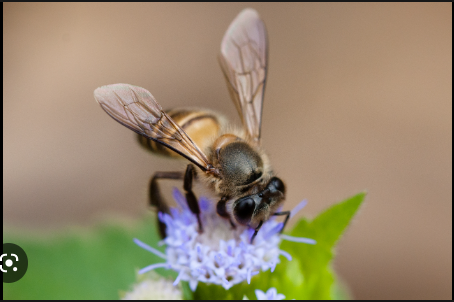A spoonful of honey reveals the secret life of bees
A new study carried out in Finland and Sweden demonstrates that DNA traces preserved in honey are like an open book narrating the activities of the bees that make it.

Have you ever wondered about the role of bees in their surroundings? From which flowers do they collect nectar, for which microbes do they serve as a home, and what diseases do they carry? Researchers who collected honey samples in northern Europe have discovered that the entire life story of a honeybee can be read from honey, the food stock of the beehive.
Based on DNA traces found in honey, the researchers were able to list the bees’ interactions with other animals, plants, viruses, bacteria and fungi.
“Thanks to honey, we can see what honeybees do often, or what they do infrequently. This is something we cannot directly ask the bees about,” says researcher Helena Wirta from the Faculty of Agriculture and Forestry, University of Helsinki.
As they collect nectar and pollen for food, bees pollinate plants. Based on the amounts of DNA in the honey samples studied, the flowers most used by honeybees are those of crop plants such as rape seed, clover, apple and strawberry. In other words, they mainly serve specifically these plants as pollinators.
However, the researchers found that, instead of plant DNA, most of the DNA traces in honey belonged to viruses and bacteria.
“Based on the DNA, what was most striking was the viral and bacterial diversity. Honey contains not only, among other things, the DNA of bacteria pathogenic to plants, but also of bacteria that protect plants from diseases. Therefore, honeybees are likely carrying all of them,” Wirta says.
Honey has antimicrobial properties, making it an ideal and long-term storage for DNA. In honey itself, microbes are mostly inactive. For children under one year of age, honey is not recommended, as it may be contaminated by Clostridium botulinum spores that may make children sick after entering their gut.
Can honey help to monitor the disease status of insects?
Also found in honey was DNA from microbes living in bees. In other words, bees themselves serve as a home for these microbes, while in turn depending on them to stay healthy. In addition, honey contained DNA from many bacteria and fungi that cause diseases in bees and other insects.
“This suggests that bees have a role in spreading these specific microbes. This finding provides a lead to what emerging diseases researchers may want to keep an eye on in any particular region. If, for instance, we find out that honeybees and certain other pollinators visit the same plant species, the flowers of this plant can serve as a platform for sharing microbes – both beneficial and harmful microbes,” Wirta says.
Information stored in honey also has global significance.
“If the DNA traces of any organisms a honeybee has met are actually recorded in its honey, then that is truly a quantum leap for all of us who are trying to understand how species come together to form ecosystems, and how together they make the world go round,” says Professor of Insect Ecology Tomas Roslin from the Swedish University of Agricultural Sciences (SLU).
In the study, the researchers used 43 honey samples from Sweden, Finland and Estonia. Some of the samples were provided by beekeepers directly, but most came straight from the shop.
Original article
Wirta, H. K., Bahram, M., Miller, K., Roslin, T., & Vesterinen, E. (2022). Reconstructing the ecosystem context of a species: Honey-borne DNA reveals the roles of the honeybee. PloS one, 17(7), e0268250.
Contact
Tomas Roslin, Swedish University of Agricultural Sciences (SLU), puh. +46 18 672 383




